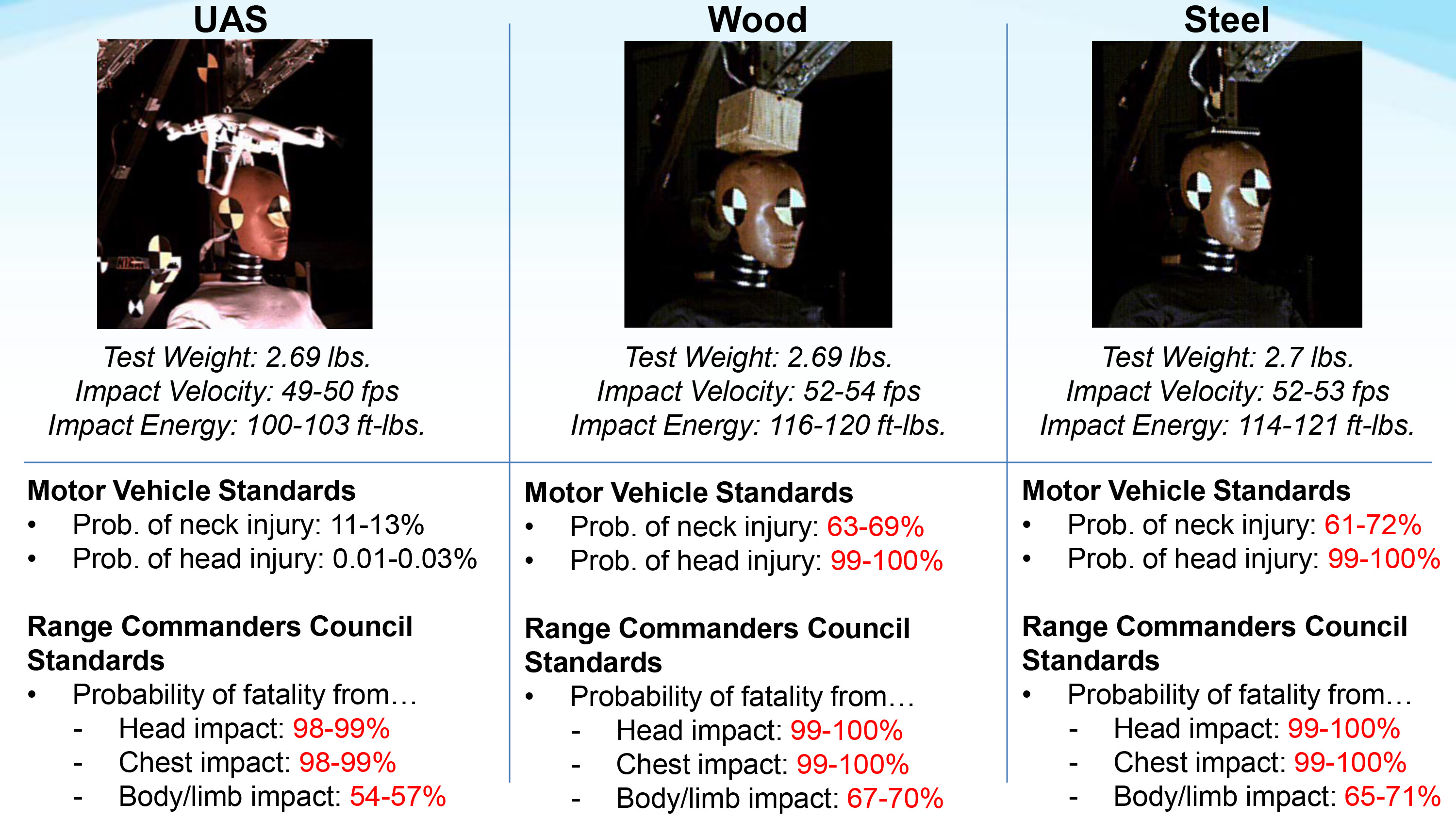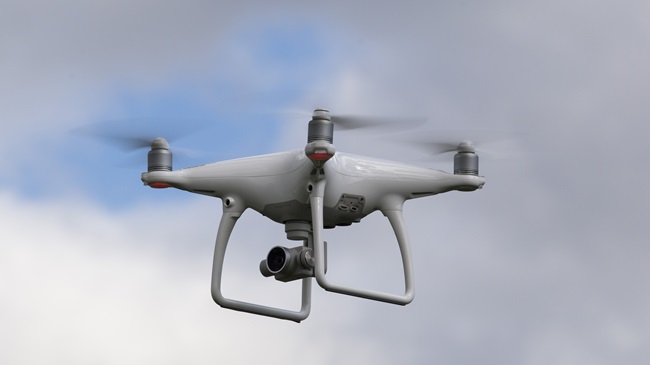Report details drone risks
Collision study only the beginning
The FAA on April 28 released a detailed report on drone crash tests and digital models of the injuries a falling drone can cause, the first product of many to come from collaborative research seeking to understand and quantify the real risks of drones flying over people.
The 195-page report, which includes data on and analysis of a broad range of consumer and commercial unmanned aircraft systems, all under 55 pounds, does not address the probability of a system failure or other causes that would send a drone crashing into nearby people.
Much of the report, the first public product of the FAA’s Alliance for System Safety of UAS through Research Excellence, or ASSURE, reads like old-fashioned common sense backed up by computational fluid dynamics:
“The kinetic energy for the worst case terminal velocity or maximum cruise airspeed, energy density, and rotor diameter are the most significant UAS characteristics contributing to blunt force trauma penetration and laceration injuries, respectively,” the report states. In other words, the bigger the drone, the harder it falls, or the faster it flies, the more likely it is to cause injury or death in a collision. This research effort did not study potentially higher-velocity collisions between manned aircraft and unmanned, though research on that is ongoing and a report is expected in the summer.
Remote pilots wondering what requirements the FAA might impose for allowing flights over rock concerts or baseball games (scenarios that were considered by the research team) may take note that the data and analysis so far makes a strong case for parachutes and propeller guards.
It may prove to be instructive that the word “parachute” appears 45 times in the text, and the analysis found the probability of injury is reduced (as common sense would suggest) by deceleration:
“Parachute mitigations and the application of area weighted kinetic energy methodology for two scenarios are presented to outline thresholds for a broader range of vehicle weights to conduct flight over people than is currently possible with the unmitigated vehicle designs currently available,” the report states.
An FAA press release on April 28 called the research “a start toward better understanding the risks of allowing small unmanned aircraft—or drones—to fly over people.”
DJI Phantom 3 drones were dropped on and flung at crash test dummies by researchers at Wichita State University, one of the schools collaborating on a task force led by the University of Alabama in Huntsville, along with Embry-Riddle, the University of Kansas, and Mississippi State University.
Market leader DJI promptly issued a press release on April 28 celebrating one of the report’s conclusions: that a Phantom quadcopter falling from 50 feet is far less likely to cause a head injury than a hunk of wood or metal with the same mass dropped from the same height—a probability of head injury (based on motor vehicle crash standards) ranging from 0.01 to 0.03 percent, compared with near-certain head injury expected from falling hunks of wood or metal.
DJI was particularly enthusiastic that the researchers determined that the standards developed to assess the risk posed by falling missile fragments on a military firing range are not applicable to plastic drones, such as the more flexible, lightweight, monocoque frame of a Phantom and the fixed landing gear that both absorb and distribute much of the impact energy, reducing probability and severity of injury to a person.
“ASSURE’s report is the first thorough scientific study of the risk drones pose to people on the ground, and we are pleased that it validates our own findings that earlier measurement standards grossly overstate the risks of injury from a drone,” said DJI Vice President of Policy and Legal Affairs Brendan Schulman in the company news release. “ASSURE’s work provides a deeper scientific understanding of the kinetic and aerodynamic factors which make drones far safer than some had thought.”

Lacerations and punctures caused by propellers are among the principal risks associated with multirotor drones like the Phantom, and the same comparison chart also noted that the falling Phantom would have a probability of causing neck injury ranging from 11 to 13 percent. The report also notes that the Phantom’s landing gear helps limit the impact on a person, while larger unmanned aircraft often are equipped with retractable gear that is unlikely to be fast enough to protect people below in a loss of control emergency.
The researchers made a case that propeller guards on multirotor aircraft (not an option for single-rotor aircraft) are “critical” to safe operations over people. Not only to they do the obvious job of limiting the damage done by spinning blades, they also create enough drag to make a difference.
“There is a 42 (percent) increase in the vertical flat plate drag area, and a 19.6 (percent) increase in the lateral flat plate drag area when the guards were added to the vehicle configuration,” the researchers wrote. “Not only do blade guards limit the risk of serious laceration injury, they add flat plate drag area and reduce the aircraft’s terminal velocity.”
The report stopped short of attempting to account for what happens when the lithium-based battery used to power nearly all small UAS currently on the market is ejected or damaged during impact, noting that significant unknowns remain, and that battery manufacturers have not been entirely transparent:
“While many of the manufacturers state they test their batteries in accordance with Lithium Ion battery testing methods for consumer electronics, the batteries are rarely marked to show compliance with these standards and many of the test methods are not consistent with the forces and energy levels associated with ground collision impact energy,” the researchers wrote. “More research is required to address the fire hazard and impact hazard presented by the broad spectrum of batteries and battery chemistries used in mUAS and sUAS platforms.”
The FAA said a study on airborne collisions will be released in the summer.




